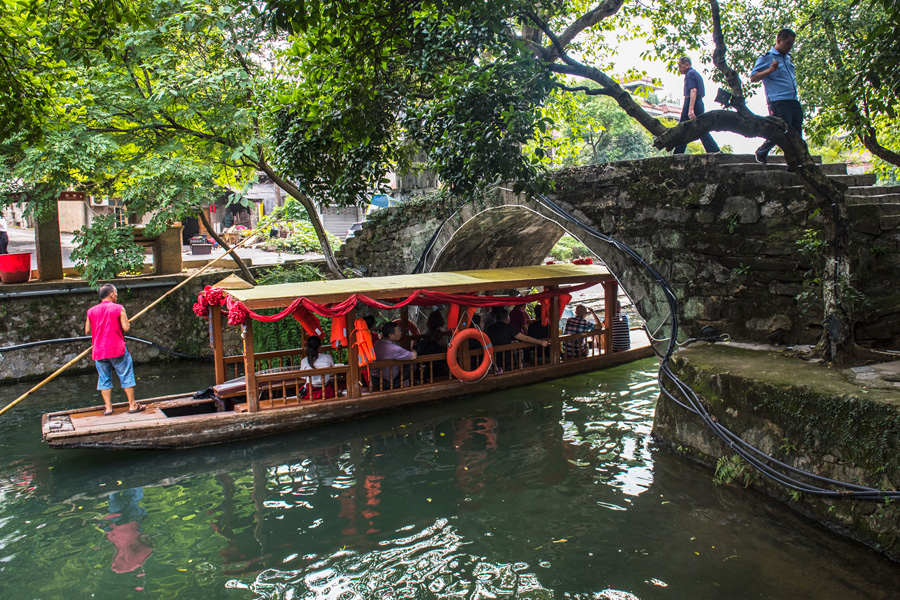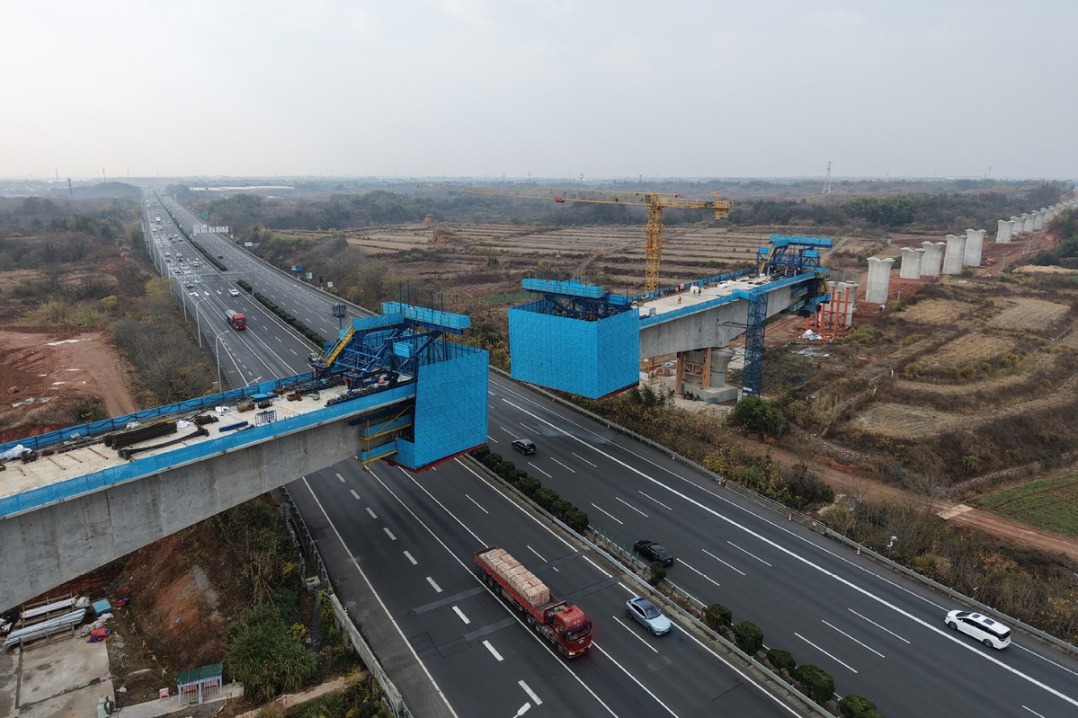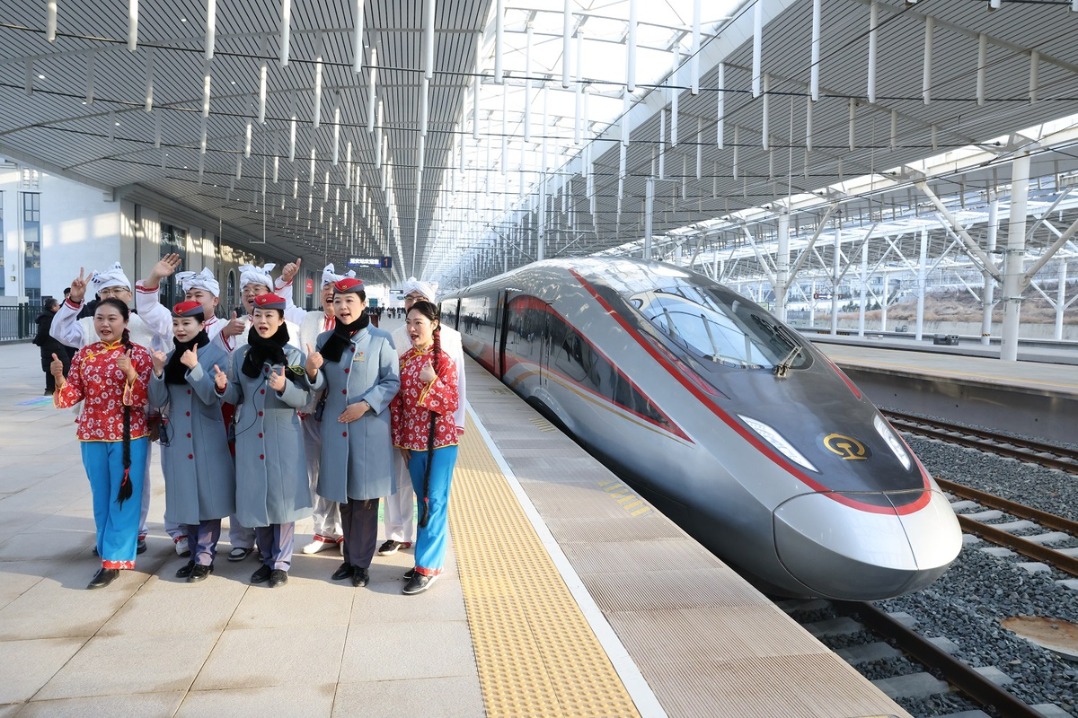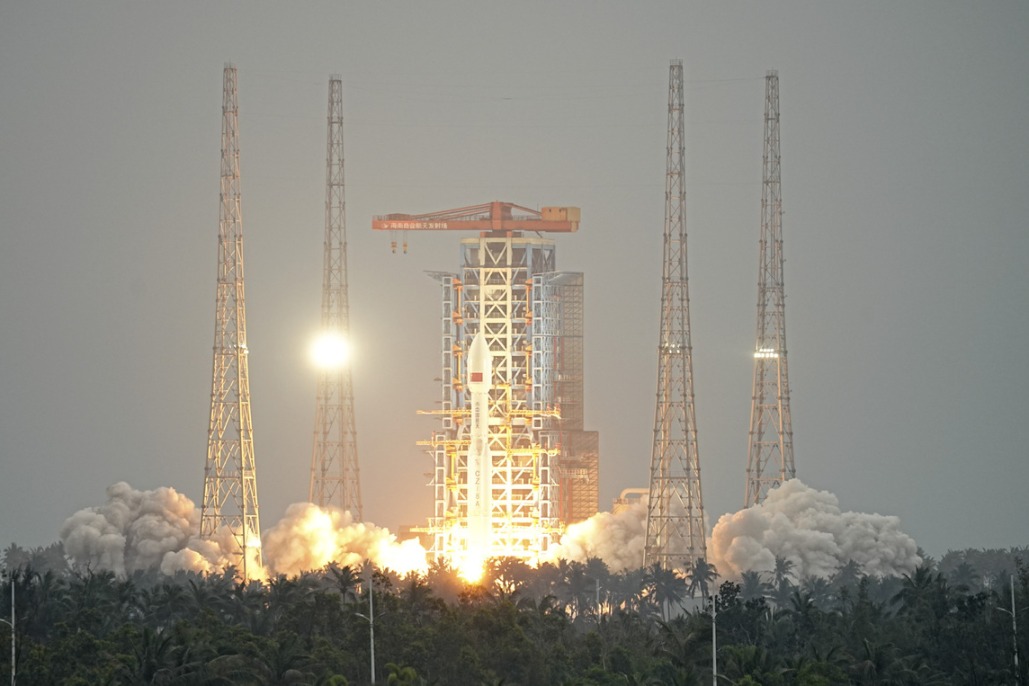Ancient canal returns to life, benefiting residents


Lingqu Canal, the world's oldest man-made navigable canal with a history of over 2,000 years, is returning to full vitality in time for a boom in tourism and modern agriculture.
The water conservation project, in Xing'an county, 70 kilometers from Guilin, the Guangxi Zhuang autonomous region, had strategic military importance in ancient China and was ordered built by Emperor Qin Shi Huang in the Qin Dynasty (221-206 BC) to help unite the country.
"The canal supports residents' spirits, and is also a symbol of the county that attracts tourists," said Huang Hongbin, Party secretary of Xing'an.
He said that over 400,000 domestic visits were made by travelers from outside the county. The Lingqu scenic spot is free to residents.
"We are now making efforts to impress visitors with Lingqu's cultural value more than natural charm," he said. "A canal-themed museum has been under construction since last September, which will help provide visitors with a better experience with its vivid interpretation."
Covering 12,000 square meters, the museum has attracted an investment of 80 million yuan ($11.5 million) from the government. It's scheduled to open to visitors around the Lunar New Year in February, according to Huang.
"We are also in the process of restoring the canal's function for irrigation and transportation to rejuvenate agriculture along the canal," he said.
The 36.4 kilometer canal, according to a statement by the government, irrigates about 43 square kilometers of paddy and benefits over 59,000 people.
Tang Chunyan, a 40-year-old Xing'an native who used to work in nearby Guangdong province, is running her restaurant and a cooperative focusing on raising fish.
"The canal brings clean water to the paddy, and makes the fish we raise in the field plump, appealing to the travelers' taste," she said. "We made a profit of about 600,000 yuan last year thanks to the long-standing irrigation system."
However, protecting the ecosystem of Lingqu Canal remains the priority in developing the ancient water conservation project, according to Huang Hongbin.
"No industrial plant has been allowed to open along the canal since the 1950s," he said. "We always revere the canal. Though it's challenging to balance protection and development of the canal, preservation of relics should always come first, as we will lose everything if the canal gets damaged."
The government launched canal repairs in 2016, with nearly 200 million yuan invested so far to restore the environment along its banks and its function in transportation, according to Huang.
The canal was listed as one of the world's Heritage Irrigation Structures by the International Commission on Irrigation and Drainage in August, and preparations are underway to apply for World Cultural Heritage.
- China launches satellite to aid in early extreme weather detection
- Report on mining accident that killed 6 suggests accountability for 42 individuals
- Law aimed at bolstering standard Chinese language education passed
- Connecting cities, changing lives
- World's longest expressway tunnel opens to traffic
- Taiwan lawmakers vote to pass motion to impeach Lai





































